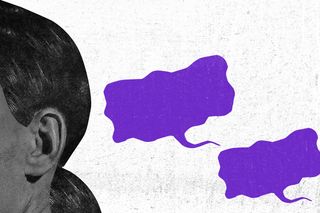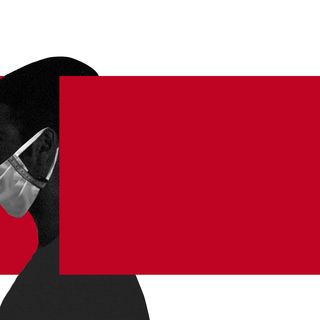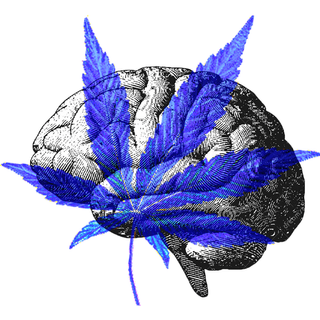
Scientists Have a Theory About Why Some People “Hear” Voices of the Dead
What’s the difference between the experiences of spiritualists and those who experience auditory hallucinations due to mental illnesses?

We may finally know why Cole Sear in The Sixth Sense could see (and hear) “dead people,” and how The Shining’s Danny Torrance’s imaginary friend “Tony” communicates danger to him. It turns out that the one thing that these characters have in common — their age — is what plays a role in people claiming to “hear” spirits in real life. In other words, people who are predisposed to certain traits in their childhoods, are likely to claim to be able to “hear” dead people, according to new research.
These traits explain why some people adopt spiritualist beliefs and voluntarily engage with the practice of “hearing” the dead, a study led by Durham University found.
The study, published earlier this year in Mental Health, Religion and Culture, included spiritualists and members of the general population as participants. It allowed scientists to better understand how auditory hallucinations occur, and how they affect different people. For self-proclaimed clairaudient mediums, researchers found a high “absorption” capacity — the ability to be completely immersed in a task — since childhood. In other words, it is a measure of how effective people are at “tuning out” the world around them.
In addition, they experienced unusual but positive auditory hallucinations in their childhoods, which they were able to control. In contrast, people with schizophrenia are unable to control their hallucinations, which are less positive and more distressing.
“Understanding how these develop is important because it could help us understand more about distressing or non-controllable experiences of hearing voices too,” Peter Moseley of Northumbria University, told Taylor & Francis Newsroom.
A large majority (79%) of the clairaudient participants claimed that auditory spiritual communication was a part of their everyday lives. And whereas 61% claimed to hear these voices primarily in their heads, 31% claimed to hear them externally. They correspondingly scored high on absorption and auditory hallucinatory scales, compared to the general population participants. Spiritualists were also less likely to care what others thought of them, compared to the general population.
According to the research, “[N]ot giving in to social pressure, learning to have specific expectations or a level of belief in the paranormal… leads to experiences of spirit communication.”
Moreover, researchers noted that participants came across spiritualist beliefs while looking for answers to their auditory experiences.
Related on The Swaddle:
Little Big Things: The 42‑Year‑Old Paranormal Investigator and Demonologist
“For our participants, the tenets of Spiritualism seem to make sense of both extraordinary childhood experiences as well as the frequent auditory phenomena they experience as practicing mediums,” said Adam Powell, lead researcher of the study.
Not everyone, in other words, can “contact” the dead or have these experiences if they simply tried hard enough. It would require a certain set of unique experiences and traits in early life, and then a belief in the supernatural, the study suggests.
The explanation may remove much of the intrigue from our favorite stories and characters. Danny Torrance’s ability is decidedly less spine-tingling if we put it down to his “absorption capacities.” But the research is our key to understanding what separates “clinical” from “non-clinical” hallucinatory experiences and furthers our knowledge of mental health.
From a cultural standpoint, too, it helps us understand why some experiences are pathologized, and others are put down to religious and spiritual experiences (RSEs). It brings us closer to understanding “why some individuals report RSEs and others do not… [and] why some anomalous experiences result in distress and a mental health diagnosis when others do not,” the study states.
Previous studies have noted how emotional motivations and expectations influence such experiences. Studies of some contemporary Christians from the UK, for instance, noted how auditory communications from “God” were frequently reassuring and offered solutions to a personal dilemma.
Previous research also found that experiencers reported a “decreased need for coping” and less stress when their earliest voice-hearing experiences were attributed to a positive social context that was validating rather than stigmatizing.
The research thus speaks to a deep vulnerability at the heart of “unusual” sensory experiences, and how societal and cultural responses can determine someone’s acceptance of their own experience.
It is also clear that, in some cultural contexts, it is easy for mental illnesses to spill over into what people perceive as spiritual experiences, leading to dangerous tendencies. In India, for instance, where superstition has led to devastating consequences for many, it is especially important to better understand what drives the overlap between hallucinatory experiences and spiritual beliefs. If the conversation around the Burari deaths is anything to go by, it is clear that we don’t fully understand how to think about and respond to non-normative experiences without putting lives at stake.
Rohitha Naraharisetty is a Senior Associate Editor at The Swaddle. She writes about the intersection of gender, caste, social movements, and pop culture. She can be found on Instagram at @rohitha_97 or on Twitter at @romimacaronii.
Related


People Who Feel Invincible to Diseases More Likely to Act in Socially Irresponsible Ways
